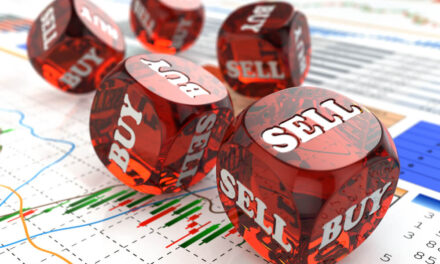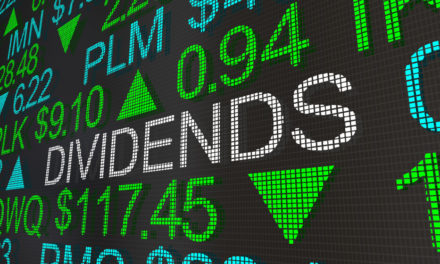After a rapid 34% drop on the S&P 500 index earlier this year, stocks have marched right back to near-record highs.
Investors wonder: Was there ever really a bear market?
Veteran market strategist Ed Yardeni doesn’t think so. On Monday, he told CNBC that the Federal Reserve is pushing the stock market into the “mother of all melt-ups.”
He explained: “The Fed has just poured in so much liquidity into the market.”
We see melt-ups when an asset class (stocks, for example) perform far better than expected. Investors cause melt-ups when they pile into stocks because they don’t want to miss out on the gains ahead.
Yardeni even said it “might look like 1999 all over again.”
Here’s what you need to know about 1999: Stock valuations soared. And that triggered the dot-com bubble of the early 2000s. When the bubble burst, the tech-heavy Nasdaq index fell by more than 75% in less than three years.
You can see the massive crash in the chart below:

Yardeni argues that stocks are too attractive now. That’s because the Fed has bought at least $428 million worth of corporate bonds as of last week:
“(It’s created) a tremendous pressure to balance out of bonds and into stocks.”
The veteran strategist doesn’t think the recent sell-off was a bear market.
And Banyan Hill Publishing’s Jeff Yastine is right there with him.
“We saw an extreme sell-off,” said Yastine, Editor of Total Wealth Insider. “It was technically a bear market that lasted for a handful of weeks.”
But then the Fed stepped in and broke the bear-market mold.
“The usual rules about bear markets, which help reset investors’ expectations to a lower, more sustainable pace, were never given a chance to work,” Yastine said.
And he thinks the Fed’s money printing has created a market environment that ignores factors like the coronavirus pandemic.
“Corporate profits have been sliced off,” Yastine said. “Yet all the same stocks that were hot before COVID-19 are considered even more valuable to own now — even with the coronavirus surging for a second time in so many communities.”
Yastine points out that the melt-up is great for investors in the short term: “Anyone invested in stocks gets richer by the week.”
But profits for these companies need to keep pace with the stocks. Otherwise, investors are in for a nasty surprise.
“We don’t know when that reckoning will come,” Yastine said. “It could start next week, next month or next year. But when stock valuations reach penultimate extremes like now, it’s only a matter of time before there’s a reversion to the mean.”
And Yastine warns that’ll take the form of a sell-off, a true bear market — or both.
Prepare for the True Bear Market Now
Don’t let this fear of another bear market keep you out of the markets. There are still plenty of opportunities to invest.
“Potentially, we’re in the eighth or ninth inning of the bull-market ballgame,” Yastine said. “So if you’re going to buy stocks, be smart about it, and focus on positions that are heavily undervalued and out of favor.”
Yastine shared an investment that has weathered the storm in the past:
“A good example is Warren Buffett’s company Berkshire Hathaway. It’s still trading 20% below its pre-virus highs. The last time Berkshire stock traded this cheaply — relative to the profits its subsidiary companies like Geico earn — was just before the dot-com bubble popped in March 2000. Berkshire’s stock went on to rise 70% over the next 12 months. The Nasdaq’s value dropped by 60% in the same length of time.”
The sell-off earlier this year may have been a bear market blip. Proceed with caution so the next one doesn’t catch you by surprise. And consider buying shares of Berkshire Hathaway (NYSE: BRK) in the meantime.




